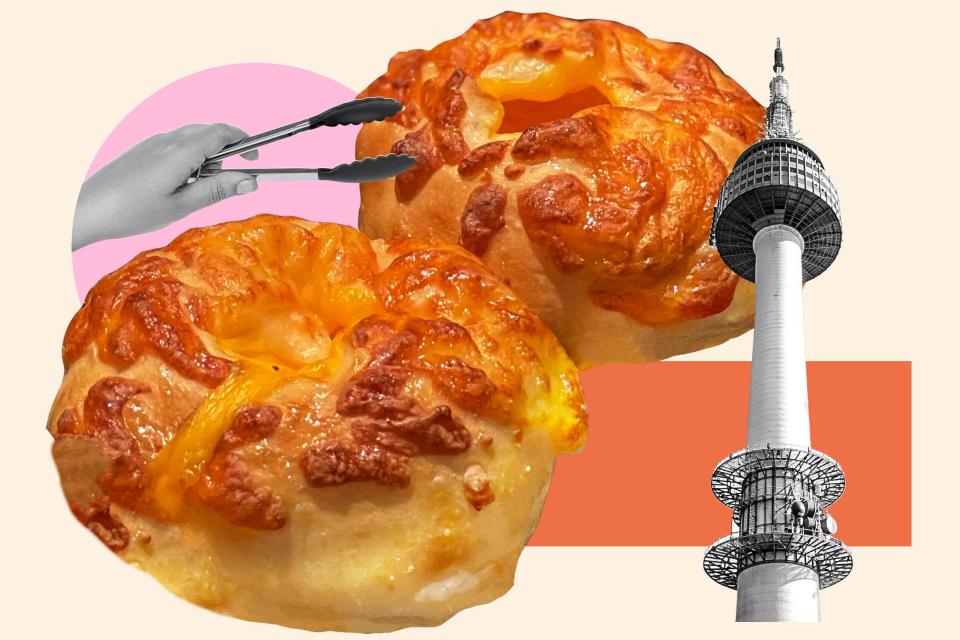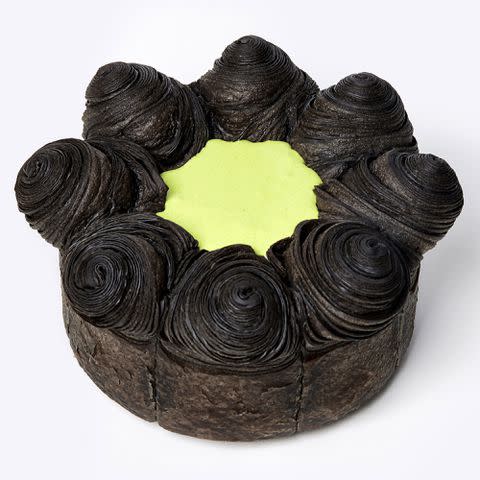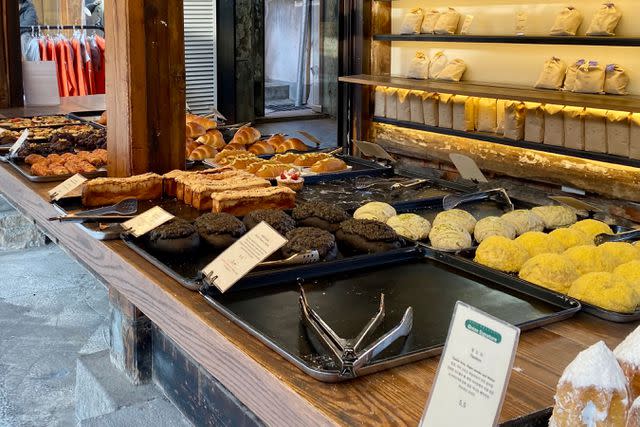Seoul's Independent Bakeries Are the Sweet Soul of the City
Independently-owned bakeries have been cornerstones of the city's culinary map for decades, and now a new wave of hotspots are breaking free from tradition.

Getty
Of all the foods my mom grew up eating in Seoul, it wasn’t kalguksu (knife-cut noodle soup), ddukbokki (stir-fried rice cakes), or Pyeongyang naengmyeon (icy buckwheat noodles from North Korea) she cherished the most. It was bread.
After high school was out for the day, she and her girlfriends would amble to Taegeukdang Bakery, where the toasty aroma of freshly-baked ppang (bread) perked up their noses even from blocks away.
“I loved that goo soo han (earthy, savory-sweet) smell,” she recalls. Opened in 1946, a year after Korean independence from Japan’s brutal 35-year occupation, Taegeukdang remains Seoul’s oldest — quite a few employees are lifers, including Kim Young-Il, who started back in 1968 — and most iconic bakery, adored for its signature ice cream-filled Monaka and red bean-filled buns.
It might come as a surprise to outsiders, but humble, independently-owned bakeries have been cornerstones of Seoul’s culinary map for decades. Believed to be first introduced to the country by European missionaries in the late 19th century and more commonly enjoyed after Korea’s liberation — when Japanese bakers vacated their shops and sold off equipment to locals — bread and other baked goods are staples in many Seoulites’ diets today.
Related: How to Cheat Jet Lag on Your Way to Asia
Though Taegeukdang, Hyoja, a Seochon spot I frequented hand-in-hand with my grandma for its wispy uyu sikppang (milk bread), and other old-school establishments still specialize in classic items favored by my parents’ and grandparents’ generations, a wave of notable newcomers is breaking free from tradition and shifting what modern-day bakeries and their offerings can look, smell, and even taste like. In short? The possibilities of what you can sink your teeth into are limitless. Here are some of the bakeries you can't miss.
For experimental pastries like squid-ink croissants

Courtesy of Nudake
At the heart of this movement is Nudake, a dessert concept started by the chic Korean eyewear line Gentle Monster. Following the immediate success of its early 2021 launch at Gangnam’s cutting-edge retail hub Haus Dosan, Nudake unveiled its first standalone location in the trendy Seongsu neighborhood last summer.
Upon entering the stark concrete structure emblazoned with a cherry-red square, I immediately understood the brand’s ethos. Eschewing the cozy vibe favored by most if its counterparts, Nudake leans heavily into the dark, moody, and enigmatic. The interiors are dimly lit and bare, save for three enormous black round tables taking center stage. On them, a cornucopia of delights meticulously displayed like museum artifacts awaits.

Courtesy of Nudake
Among the most sought-after items are the Peak Cake, a pull-apart ring of squid-ink croissants surrounding a matcha cream center in a murky Slimer-green shade, and Fog Cake, a black-white ombre confection filled with fluffy sponge cake, black olive bits, and cheddar-flavored cream cheese. I was especially charmed by the mini sliders layered with sliced cheese and pickles, and thumbnail-sized micro croissants.
Related: Eunji Lee's Showstopping Pastries Blend Korean Flavors and a Passion for Fine Art
For gorgeous cakes in a restored hanok

Katie Chang
Another brand worth paying attention to, Cafe Onion has several locations but Cafe Onion Anguk should top your list. While it also sells eye-catching creations such as the Pandoro, an Italian-inspired and mountain-shaped cake heaped with powdered sugar, it’s the stunning setting that sets itself apart.
Housed in a lovingly restored hanok, a traditional wooden home popularized during the Joseon dynasty, Cafe Onion Anguk encourages you to slow down, socialize, and snack right on the floor. (Be polite and take your shoes off beforehand.)
For trendy (but excellent) bagels
A trend that seemed to emerge out of thin air, bagels are everywhere these days. Eric Kim, who learned the craft in Montreal as a young adult, opened Wayne’s Bagels in Gangnam in 2022, specializes in Montreal’s signature sweet and dense versions. Woman-owned SF Bagels in Yeonnam-dong is a snug take-out joint turning out crunchy sourdough bagels free of added sugar and yeast. And for staunch bagel purists, Sinsa-dong’s Lots O Bagels — the first location is in Queens, and is coincidentally Korean-owned — sticks with New York tradition by hand-shaping, boiling, and baking their doughy discs.
For viral treats in a kitschy setting
But the spot dominating Seoulites’ social media feeds is the peculiarly named and kitschy knick knack-filled — imagine Princess Diana portraits and British flags — London Bagel Museum in Jongno-gu. As for the bagels, they resemble North American ones with their round shape, center holes, and shiny crusts, but that’s where the similarities end. Smaller in size with a soft, fluffy texture and distinct sweet-savory profile, they come in flavors like potato cheese, fig, and dark chocolate.
Despite getting there at eight in the morning, when London Bagel Museum opens, there was a long line snaking down the block. After plenty of patience and some friendly chit-chat with other hungry patrons, I got my hands on the best-selling spring onion pretzel bagel. Reminiscent of Roman maritozzi, sweet buns tidily swiped with whipped cream, the first bite left me perplexed. It was softer than I anticipated — much sweeter, too. Instead of being pleasingly smooth and tangy like plain cream cheese, the filling was light-as-air, sweet, and salty.
After some more considered chewing, things started clicking together. I realized that the spring onion pretzel bagel is all about the creating the perfect bite — a sum far more enjoyable than its individual parts, blissfully free from what Westerners believe an authentic bagel should be.
This might not make sense to everyone, let alone neatly fit into a familiar category, but that’s not the point of this bagel and other baked goods popular in Seoul nowadays. Because while these items may look different from the versions my mom and outsiders grew up with, no one can argue they do what bread has always done all over the world: be a deep source of comfort and pleasure.
For more Food & Wine news, make sure to sign up for our newsletter!
Read the original article on Food & Wine.

